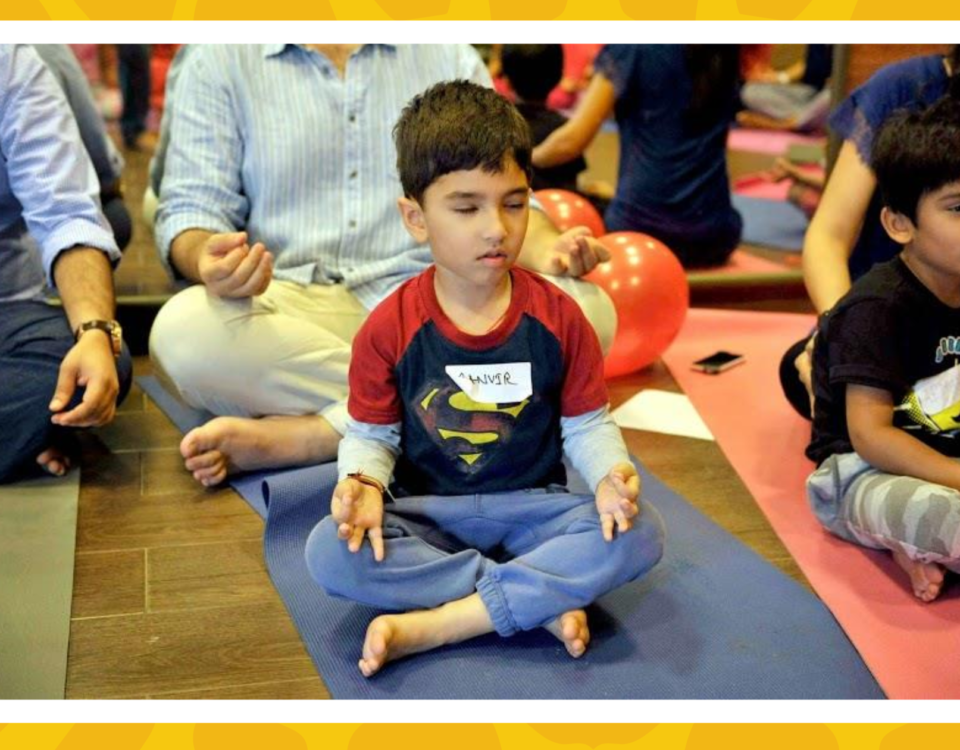How to Ensure a Fun & Healthy Meal for Your Child?

Off-Screen Tips & Mindful Activities for Your Child’s Daily Schedule
January 12, 2021
How to Make Sure That Your Child Sleeps Well?
February 4, 2021How to Ensure a Fun & Healthy Meal for Your Child?
“Come on, eat it faster, your class starts in five!”
“Don’t cry, look here’s Baby Shark!”
Children have a curious little mind and if you inspire their curiosity, you have their attention! Most of us are guilty of rushing our children through the process of eating. While virtual solutions may be quick fixes for a fussy baby, they aren’t the most ideal. Wonder what is?
This article sheds light on some tips and activities to ensure that children relish their food instead of gulping it down absentmindedly.
Eat a Rainbow!
This works wonderfully for children across all age groups, while older children get fascinated with the idea of a ‘rainbow on their plate,’ toddlers instantly get hooked onto the contrasting palette of colours. Imagine a line of bright red tomatoes, followed by juicy carrots, a few kernels of corn, fresh green sprouts, and ripe blueberries, our rainbow of food is ready for you to dive in! And this is just an example, the sky is the limit for your creative presentation of VIBGYOR!
Incorporate their Interests
Is yours a fan of Harry Potter? Use references and draw associations from the story to interest your child; for instance, “Doesn’t this sweet potato look just like a snitch?” Similarly, you could loop in different personalities, shows, and subjects to make eating fun and insightful!
Get Creative with Food
Children often run away hearing the word ‘Milk,’ but what if you called it ‘Superman Juice?’ Chances are, those little feet will instantly come running back to the glass they once dreaded. Humanizing items helps a lot too; instead of making the usual circle roti, make a sad/ happy emoji. By encouraging children to eat that last roti just because it was ‘sad,’ you’ll also inculcate the habit of empathizing in them.
Presentation Matters
Now it may be difficult to feed your little one a piece of raw carrot, but if these carrots were laid as eyes, the probability of him/her eating them increases. Similarly, nuts and seeds could be the hair of the food-character you prepare! Once in a while, you could also introduce substitutes to the daily consumption, for instance, vegetable kebabs in place of raw veggies and a healthy dip instead of yogurt.
Help them Know their Food
Children love to be in charge of things, the little pat on the back after making a contribution goes a long way in honing their overall character. As parents, we must engage them in activities like gardening and grocery shopping. Ask them for their inputs about the weekly food plan, and allow them to help in food preparation as well, for even if they merely stir a dish, they’ll eat it and serve it with pride. Moreover, such involvement strengthens confidence and leadership qualities.
To conclude, the nutritional requirement for adults and children varies greatly; while the former is focused on wear-and-tear, the latter carters to growth and development. We must include healthy carbohydrates, calcium, protein, vitamins, iron, and fibre in our child’s diet, and use creative activities, like the ones mentioned above, to make sure their body receives the proper nutrition.




